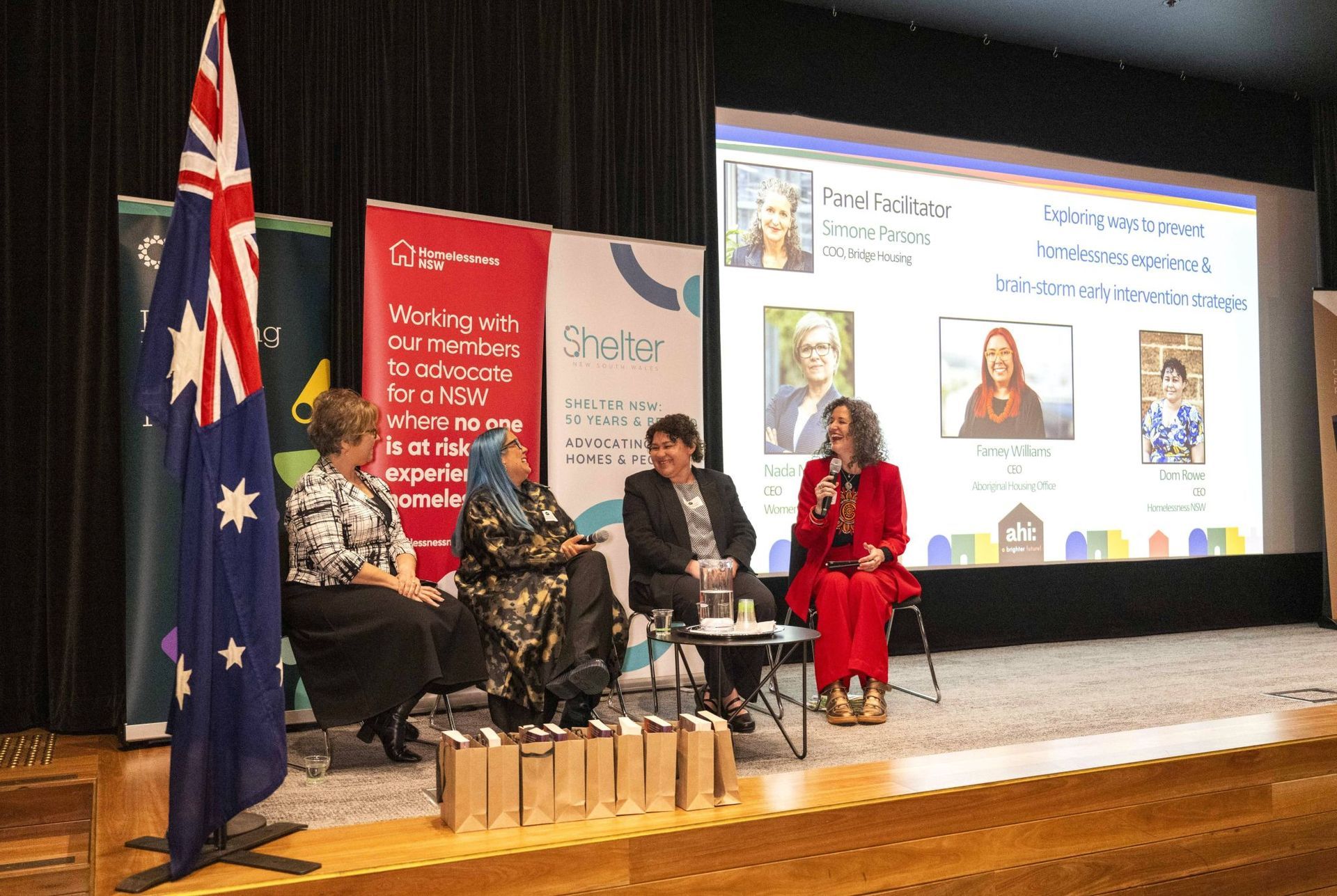Shelter WA is working alongside a group of people with lived experience of homelessness in the Hear of My Experience (HOME) project. Project Manager Donna Turner shares the details.
People who have faced homelessness or housing insecurity are coming together to make sure their voices are heard and to make a difference. Funded by the Sisters of St John of God, the Hear of My Experience (HOME) project aims to:
- Reduce community stigma around homelessness by hearing more from people who have experienced it and tell it like it really is;
- Support people with lived experience to engage in systemic advocacy at all levels by providing training and other supports;
- Improve housing and homelessness policies, systems and services by ensuring lived experience voices are at the decision-making tables.
Several of the HOME project participants––Lana, Gabby, Affinee and Anthea––and a member of the Youth Homelessness Advisory Council, Alicia, decided to make a series of videos that identify the need for system and service change.
Why? As Lana says, “So that other people don't have to go through what I went through”.
As for Affinee, “I created this video to challenge misconceptions about homelessness—a heartfelt call for compassion, understanding and meaningful change to address the housing crisis.’
Lana’s Story
Lana Moon is using her lived experience of homelessness to advocate for changes to the system; a system that often fails to see people in adversity as human beings with intersectional needs, and which treats many people as lost causes.
With additional funding from Lotterywest, we engaged a lived experience facilitator, Kathy Greenwood from the WA Mental Health Association. Kathy delivers training through purposeful storytelling. We were also supported by Chanel Bowen, a film producer and disability advocate. Chanel helped the participants to identify the boundaries of what they would keep private and what they would share.
When asked what response they’re expecting––or hoping––for the videos, Alicia says, "I really hope people don't just watch the videos, but they listen to us. I hope that people take what we're saying and incorporate it into policy, strategy and solutions to end homelessness."
“I hope they feel compassion for homeless people and see their resilience,” says Anthea
'I hope people feel like they can help,” says Gabby.
Affinee’s Story
Homelessness affects people from all walks of life, including many who are employed. Affinee hopes to challenge our preconceptions, reduce stigma and foster empathy. She believes that, while we can’t solve the housing crisis alone, we can make a meaningful difference in a person’s experience.
The HOME videos are short, sharp and amazing
These one to two-minute stories say a lot in their brevity. They focus on:
- The growing number of people who are working and homeless;
- The need to see homelessness service users as whole people dealing with a number of issues, while also bringing their own strengths;
- The need for service pathways to coordinate access across multiple sectors of support;
- The need to understand how youth homelessness is different to homelessness experienced by children, adults and older adults.
Alicia’s Story
Alicia Keenan has experienced a form of homelessness that impacts a lot of younger people. Sleeping on friend’s couches can be a better option than being at home, but it doesn’t give security and control over your situation. We all deserve to have housing that lets us live our lives to the fullest.
Supporting people with lived experience
If you want to support people with lived experience to share their stories, our advice would be… do it! But there are some important lessons we’d like to share:
- Create the right space
Do it in a group where people with lived experience can provide each other with support.
“It felt safe to share my story alongside others with lived experience.” Alicia - Take time
We had six meetings together before filming, facilitated by Kathy. Chanel gave practical tips and tools for helping help people stay in control of their narrative. During this time of sharing and learning, there was a lot of peer support and encouragement in the room, which was important given the seriousness of the topics being discussed.
“The workshopping in the lead up to the filming were superbly helpful with developing my video.” Affinee - Be trauma-aware
We included a peer supporter in every meeting and on filming day. This provided a space for if things got too intense, so the participants could take time out to debrief.
If the preparation is solid––and the space is safe and creative––people surprise themselves.
Gabby’s Story
Gabby knows that people who are experiencing homelessness may also be dealing with drug and alcohol use, and mental health challenges. They need to be seen and understood as whole people. Services need to know how to do that respectfully or else people will not get the support they need.
Anthea says, “I learned that my voice is powerful, and my story is strong.” For Lana, she learnt that, when in the right space, she could “be an advocate for change without getting angry”, while Gabby got to push herself beyond her usual boundaries.
Kathy says, “It was a privilege to be connected to their wisdom, resilience and creative expression. It is always so powerful to hear from the lived experience voices.”
Securing a dedicated budget for the project means there won’t just be fantastic videos; there will also be a group of people with systemic advocacy skills and confidence to speak up about how the housing and homelessness systems need to change.
“The video creation process brought many of us together and provided a point of connection and solidarity in our advocacy in homelessness,’ adds Affinee.
During Homelessness Week, the videos were shown at multiple events and receive overwhelmingly positive feedback. The videos have been viewed on You Tube over 4,000 times at the time of writing.
Anthea’s Story
Anthea has found herself again in her art after an act of kindness when she was living rough. For Anthea, art is culture and culture is diverse. People who are homeless have talents and gifts, but this isn’t recognised by people walking past who judge and don’t understand. If people show kindness, it can change lives.
Shelter WA team members involved in the project would like to congratulate Anthea, Gabby, Alicia, Lana and Affinee for their courage and professionalism in sharing lived experience knowledge and wisdom for the purpose of making changes for others.
Visit the Shelter WA website for more information about Hear of My Experience (HOME)
Share This Article
Other articles you may like








